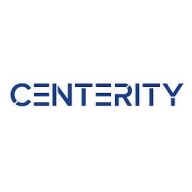

Splunk Observability Cloud and Centerity Monitor are two competing products in the IT monitoring sphere. Splunk Observability Cloud has the upper hand in data analytics while Centerity Monitor offers a comprehensive feature set.
Features: Splunk Observability Cloud offers real-time visibility, robust data analytics, and seamless data format integration, providing businesses with insightful observability across complex environments. Centerity Monitor provides all-in-one monitoring capabilities, covers a wide range of metrics, and supports hybrid environments, making it suitable for those seeking a broad functionality in a single solution.
Ease of Deployment and Customer Service: Splunk Observability Cloud allows quick deployment with its cloud-native infrastructure, extensive documentation, and responsive support channels. Centerity Monitor favors an easy implementation process with straightforward setup and comprehensive onsite options, complemented by personalized customer support.
Pricing and ROI: Splunk Observability Cloud, with its higher setup cost, offers high-level analytics that justify its expense, leading to solid ROI for large-scale operations. Centerity Monitor presents a cost-effective solution with upfront pricing and significant ROI due to its extensive features, making it an attractive choice for budget-conscious businesses.

Splunk Observability Cloud combines log search, data integration, and dashboards for seamless monitoring, enhancing infrastructure visibility and security. Its cloud integration and scalability support diverse environments, improving operational efficiency.
Splunk Observability Cloud offers comprehensive monitoring tools with user-friendly interfaces, enabling end-to-end infrastructure visibility. Its real-time alerting and predictive capabilities enhance security monitoring, while centralized dashboards provide cross-platform visibility. Users benefit from fast data integration and extensive insights into application performance. Despite its advantages, improvements could be made in integration with other tools, data reliability, scalability, and cost management. Users face challenges in configuration complexity and require better automation and endpoint protection features. Enhancing AI integration, alerts, and adaptation for high-throughput services could further improve usability.
What are the key features of Splunk Observability Cloud?In industries like finance and healthcare, Splunk Observability Cloud is implemented for application performance monitoring and infrastructure metrics. Its ability to track incidents and analyze machine data benefits network infrastructure, while distributed tracing and log analysis aid in tackling security threats. Organizations often integrate it for compliance and auditing purposes, enhancing visibility into network traffic and optimizing performance.
We monitor all IT Infrastructure Monitoring reviews to prevent fraudulent reviews and keep review quality high. We do not post reviews by company employees or direct competitors. We validate each review for authenticity via cross-reference with LinkedIn, and personal follow-up with the reviewer when necessary.